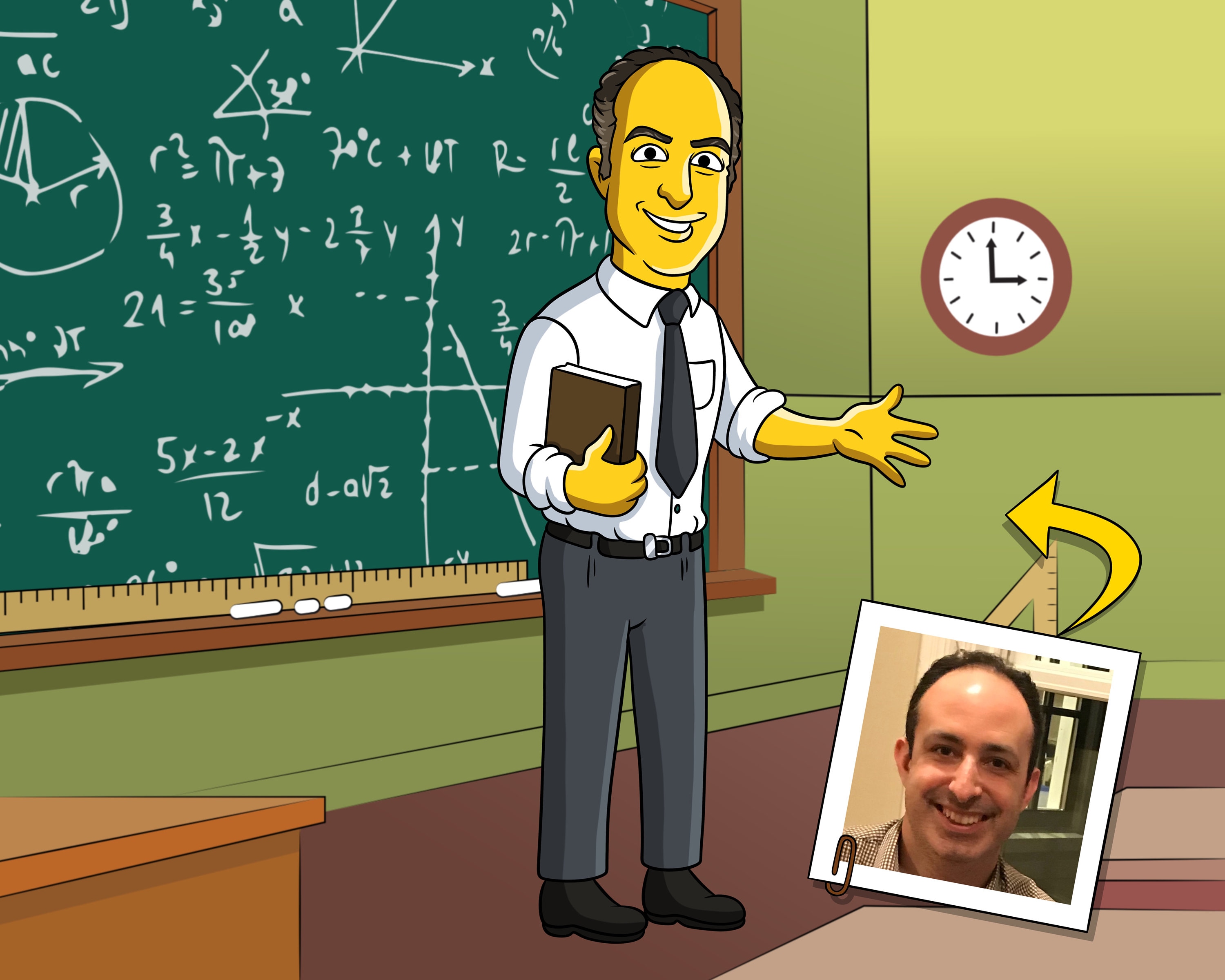A complete guide to how experienced math teachers apply technology in the classroom
Wiki Article
Attaining Venture Excellence: Recognizing Industry Standards and Strategic Leadership for Mathematics Faculty
Attaining business excellence in maths education requires a careful evaluation of industry requirements and the role of calculated leadership. Mathematics professors must comprehend exactly how these criteria form educational program and teaching approaches. In addition, efficient leadership can drive partnership and professional advancement among educators. This complex strategy questions concerning the useful implications for trainees' career preparedness. What techniques can faculty embrace to bridge the gap between education and learning and market needs?The Importance of Market Standards in Mathematics Education
In the domain name of mathematics education and learning, sticking to industry standards is necessary for guaranteeing that programs efficiently prepare students for real-world applications. Market requirements provide a framework that lines up educational outcomes with the skills required in numerous careers. By integrating these requirements, math programs can enhance their significance and rigor, therefore boosting trainee interaction and finding out outcomes.
Strategic Leadership: Specifying Roles and Duties
Efficient strategic management within mathematics professors calls for a clear interpretation of responsibilities and roles to guarantee ideal working and positioning with institutional objectives. Leadership frameworks have to be established to mark jobs amongst faculty members, managers, and support staff, making certain that each specific understands their payments toward collective purposes. Professors leaders must cultivate an atmosphere that promotes collaboration and responsibility, allowing employee to involve properly in educational program advancement and analysis processes.In addition, calculated leaders have to prioritize recurring specialist advancement, ensuring that professor are fully equipped to meet the evolving demands of maths education. This entails not only aligning specific functions with institutional top priorities yet also fostering a culture of constant renovation and innovation. By plainly defining functions, critical leadership can enhance communication, improve decision-making processes, and eventually contribute to an extra reliable and natural maths faculty, poised to meet the obstacles of modern education and learning.
Ideal Practices for Enhancing Training and Understanding
In the search of boosting mentor and understanding, math faculty can benefit from cutting-edge training approaches that involve pupils effectively. Implementing joint understanding atmospheres fosters teamwork and crucial thinking abilities amongst learners. These ideal methods are vital for creating a vibrant instructional experience that promotes much deeper understanding of mathematical ideas.Innovative Training Methods
While conventional techniques of mentor have their place, innovative mentor techniques are essential for improving involvement and understanding among maths faculty and their pupils. Methods such as turned classrooms and problem-based understanding encourage energetic participation, enabling students to take ownership of their understanding. Integrating technology, such as interactive simulations and on the internet partnership tools, better supports diverse understanding styles and fosters essential thinking. Furthermore, using real-world applications in lessons helps trainees attach mathematical concepts to everyday life, making the topic much more appealing and appropriate. Professors participants who accept these methods can produce a vibrant learning environment that not only enhances understanding yet also influences a long-lasting interest for maths. Adopting innovative methods eventually causes greater degrees of pupil success.
Collaborative Knowing Environments
Building on the ingenious training methods previously talked about, collaborative understanding atmospheres play a pivotal function in enhancing the academic experience for mathematics professors and their trainees. These settings motivate energetic engagement and promote a feeling of community, allowing pupils to gain from one an additional and develop important thinking skills. Finest practices include organized team work, peer tutoring, and project-based discovering, which advertise collaboration and shared obligation for finding out outcomes. Professors needs to facilitate discussions and supply advice while allowing trainees to discover ideas collectively. Furthermore, integrating modern technology can boost collaboration by offering systems for interaction and resource sharing. Ultimately, collective discovering settings equip pupils to take possession of their education and learning and grow a much deeper understanding of mathematical principles via synergy and interaction.
Aligning Faculty Goals With Institutional Goals
Lining up faculty goals with institutional objectives is important for fostering a natural educational environment that enhances both teaching performance and pupil success. When professors participants recognize and accept the wider objective of their organization, their teaching strategies can be customized to sustain these purposes. This placement ensures that faculty are not only fulfilling department expectations yet additionally adding to the overarching objectives of the institution, such as improving pupil interaction and academic efficiency.To accomplish this positioning, regular interaction between faculty and management is vital. Workshops and collaborative conferences can promote conversations on institutional priorities and just how faculty can integrate these right into their educational program. Furthermore, performance analyses can be created to show these straightened goals, encouraging professors to innovate in their mentor methods. Inevitably, when faculty objectives resonate with institutional goals, they cultivate a much more unified approach to education and learning, benefiting both trainees and educators alike.
Cultivating a Culture of Continual Enhancement
Fostering basics a culture of constant renovation within mathematics faculty is crucial for enhancing both training top quality and pupil outcomes. This entails producing an environment where professor are motivated to frequently evaluate their training practices and look for feedback. Professional growth chances should be available, allowing educators to check out new pedagogical strategies and incorporate evidence-based techniques into their educational program.Cooperation amongst faculty is important; sharing insights and experiences can lead to ingenious options and enhanced teaching approaches. Organizations ought to implement systematic assessment processes, enabling professors to assess their performance and identify locations for development.
Acknowledging and celebrating achievements, no issue exactly how tiny, strengthens the commitment to renovation. By embedding constant improvement right into the faculty culture, math departments can boost their general effectiveness, inevitably benefiting both educators and trainees in the pursuit of scholastic excellence.
Cutting-edge Methods to Mathematics Program Growth
Countless ingenious approaches can transform maths program advancement, making it more responsive to the evolving academic landscape. experienced math teachers. One efficient technique involves incorporating modern technology, such as on the internet learning systems and interactive software, to improve pupil engagement and ease of access. This change permits a blended discovering atmosphere, satisfying diverse discovering designsAdopting a project-based knowing structure urges joint problem-solving and real-world application of mathematical ideas. Faculty can likewise stress interdisciplinary links, highlighting how mathematics intersects with areas like art, engineering, and science, fostering a more alternative academic experience.
Routine comments from trainees and market stakeholders can guide educational program modifications, making certain relevance and roughness. In addition, supplying expert advancement possibilities for professors can advertise cutting-edge teaching techniques and keep educators informed of the most up to date trends. Via these strategies, math programs can cultivate a dynamic understanding ambience that prepares trainees for future challenges and careers.
Regularly Asked Concerns
Exactly How Can Faculty Gauge the Impact of Sector Standards on Pupil Outcomes?
Faculty can measure the right here influence of market standards on pupil results by assessing analysis results, tracking work prices, soliciting company feedback, and performing longitudinal research studies to contrast trainee efficiency before and after carrying out the criteria.What Resources Are Available for Expert Development in Mathematics Education And Learning?
Numerous resources for expert growth in maths education include online programs, workshops, webinars, this website specialist organizations, seminars, and peer partnership possibilities. These systems facilitate skill enhancement, ingenious training approaches, and efficient integration of innovation right into maths instruction.Exactly How Do Sector Standards Vary Across Various Geographical Regions?
Market criteria differ considerably across geographical areas as a result of factors like governmental regulations, academic top priorities, and social impacts. These discrepancies can impact curriculum advancement, training methodologies, and the application of evaluation methods in mathematics education.What Role Does Innovation Play in Achieving Business Quality in Mathematics?
Modern technology boosts venture quality in maths by simplifying procedures, making it possible for information evaluation, cultivating cooperation, and giving accessibility to sources. It encourages students and teachers alike, promoting innovative teaching approaches and boosting total instructional results in the field.Exactly How Can Faculty Successfully Collaborate With Industry Allies?

In the pursuit of improving training and knowing, math professors can benefit from ingenious training strategies that engage pupils effectively. While conventional approaches of training have their place, ingenious mentor approaches are vital for boosting involvement and understanding among mathematics faculty and their trainees. Structure on the cutting-edge training strategies previously gone over, joint understanding environments play a critical function in improving the instructional experience for maths professors and their trainees. Aligning faculty objectives with institutional goals is important for cultivating a cohesive educational environment that improves both teaching effectiveness and student success. Fostering a culture of continuous improvement within maths professors is crucial for boosting both educational top quality and trainee results.
Report this wiki page